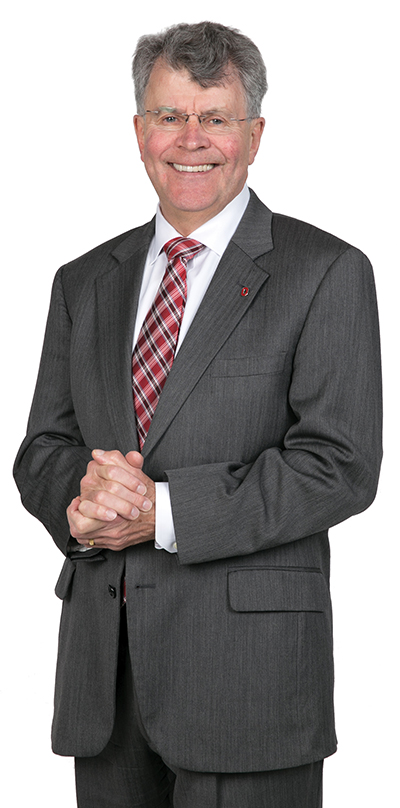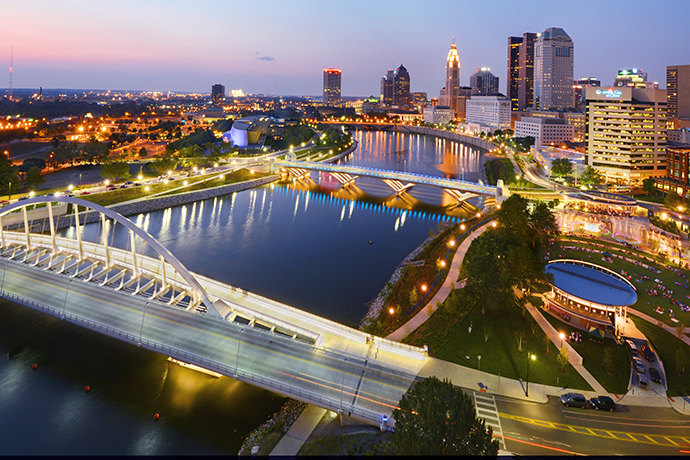About 10 years ago, a group of community leaders in the Columbus Region got together and posed the following question: Can you build a high-performance economy in the middle of the Midwest?
A decade later, they have their answer: an emphatic yes.
Following the greatest decade of growth ever experienced in the metropolitan area of 2.1 million people, the Columbus Region has proved that sustained economic success is possible in the American Heartland.
Amazon admitted as much when it named Columbus one of its 20 finalists for the prized HQ2 project, alongside Atlanta, Dallas, New York, Los Angeles, Chicago, Boston, Washington, D.C., and other major cities.
"By any measure, we are achieving our goals for growth," says Kenny McDonald, president and chief economic officer of Columbus 2020. "We are nearing the end of our 10-year plan, and all objectives were achieved two years early."
The goals were ambitious: 150,000 net new jobs, an average of $700 million in capital investment per year, and a 30 percent increase in per capita income. Check, check, check.
The goal was to attract $8 billion in new capital investment by 2020. Columbus surpassed that benchmark last year. And now the accolades are pouring in.
Inc. magazine recently reported that Columbus is poised to become "the new capital of the Midwest." Columbus is already America’s 14th largest city, with just under 900,000 people, and won a Smart Cities grant of $50 million to help perfect its mobility systems.
Site Selection named Columbus a top 10 metro area for expansion projects earlier this year, and its high-quality neighborhoods are achieving national recognition.
Niche.com recently ranked the Top 50 Suburbs in America; five of them are in the Columbus area: Dublin, Bexley, Grandview Heights, Upper Arlington and Powell.
Want hip locales to attract millennial talent? Check that box too. Places like the Short North, German Village and the urban campus of The Ohio State University (OSU) fit the bill.
An Intentional Plan to Pursue Job Growth
When asked how Columbus achieved this success so quickly, McDonald says, "First and foremost, it was leadership at a business community level. The biggest companies made this a priority to invest in it and get started. Secondly, our elected leaders decided to be more intentional about pursuing job growth; and thirdly, we had professional economic developers at the local, regional and state level lean into this."
Institutions played a role as well, none more so than OSU. David B. Williams, dean of the College of Engineering and executive dean of the Professional Colleges, says the impact of OSU cannot be overstated. "The university grants 15,000 degrees a year," he says. "About 2,500 engineering degrees are awarded yearly, and over 50 percent of our grads stay in Ohio. Columbus is a magnet for young people who want to pursue a productive career."
OSU excels in advanced materials; manufacturing; smart mobility; aviation manufacturing and drones; biotech including cancer prevention, detection and treatment; and data analytics.
On top of that, an OSU education is affordable. "Of the 50 flagship state universities in America, only one had a tuition increase of less than 10 percent over 10 years, and that was OSU," says Williams. "Over 50 percent of our students graduate with zero debt. This is the most affordable quality education you can get."
Many of those grads go on to lead successful startups. Tom Walker, CEO and president of Rev1 Ventures, a noted accelerator in Columbus, is on track to lead his firm to facilitating $2 billion in economic impact from startups in the region since 2013.
"Our philosophy is focused on connecting startups to assets in their own backyard," says Walker. "We connect them to research institutions, corporations, hospitals, etc., to build innovation programs. That is one of the greatest strengths of Columbus. We are a very collaborative community. That allows us to connect talent to capital."
With 15 Fortune 1000 companies based in Columbus, resources abound, notes Walker. "More capital is available at the seed stage for early stage companies than ever before," he adds. "Columbus 2020 is a strong partner, as is the Third Frontier program at the state level."
Columbus, in fact, ranks No. 1 in Forbes’ annual list of rising cities for startups.
Columbus Joins the Unicorn Club
The startup ecosystem in Greater Columbus has already produced two unicorns: Root Insurance and CoverMyMeds. Acquired last year by the McKesson Corp., CoverMyMeds is a healthcare software company that creates software to automate the prior authorization process used by some health insurers in the U.S. It was founded in 2008.

"Matt Scantland graduated from OSU and started the company here," says Veronica Knuth, senior director of talent management for CoverMyMeds. "Columbus is centrally located and affords us the ability to attract world-class tech talent. Cultural diversity is here, and Columbus is incredibly affordable. It is a great place to live and grow a family. We have 800 employees now; we hired over 200 in the last year alone. Over the last four months, we hired 140 new folks and promoted 60."
Located at Miranova Place and 41 South High Street in downtown Columbus, CoverMyMeds provides its workers with convenient access to a high quality of life 24/7, notes Knuth. "We are finalizing our plans to build our own campus," she adds. "We anticipate breaking ground in the Franklinton area just west of downtown in late winter or early spring of next year."
Phase one of the new campus will be 200,000 sq. ft. and will take about three years to complete. "There is a thriving economy here," Knuth says. "Columbus is a place where you can grow from startup to a large size quickly. The business community is committed to making Columbus a best place to work. That benefits every company here."
This Investment Profile was prepared under the auspices of Columbus 2020. For more information, contact Amy Harman at ah@columbusregion.com or 614-225-6070. On the web, go to www.columbusregion.com.

